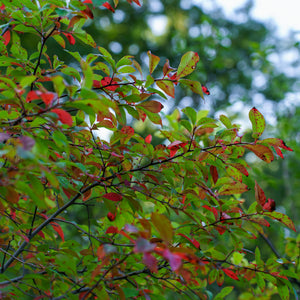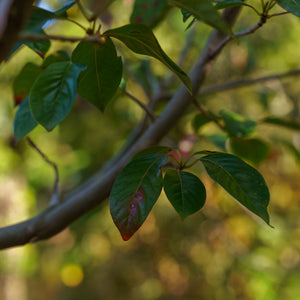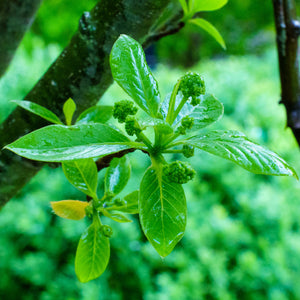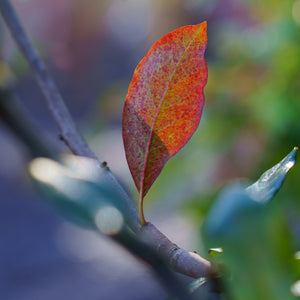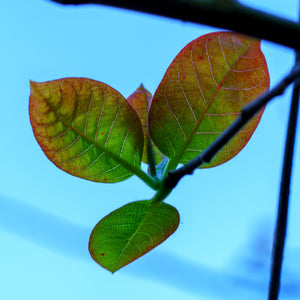The Tupelo Guide
Black tupelo (Nyssa sylvatica), also known as black gum or sour gum, is a native deciduous tree revered for its glossy green leaves, brilliant fall foliage, and adaptability to a range of growing conditions. Found naturally in lowlands, woods, and along streams, it performs well in home landscapes where its strong structure and multi-season interest add timeless beauty and ecological value.
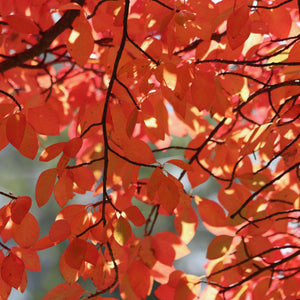
About
Nyssa sylvatica is a slow- to moderate-growing tree native to eastern North America. It typically reaches 30 to 50 feet tall at maturity, with a broadly pyramidal or irregular shape and a strong central leader. The leaves are glossy, dark green, and turn stunning shades of red, orange, yellow, and purple in fall—often on the same tree.
Black tupelo is dioecious, meaning male and female flowers appear on separate trees. Female trees produce small, bluish-black berries in late summer to early fall, which are a favorite food for birds, especially migrating songbirds. Its flowers are small and inconspicuous but are an important early nectar source for bees.
Popular cultivars include:
- 'Green Gable': Upright, symmetrical growth with vivid red fall color.
- 'Wildfire': New foliage emerges red and matures to dark green; excellent fall display.
- 'Tupelo Tower': Narrow, columnar form suitable for tighter spaces.
- 'Zydeco Twist': Twisting, irregular branches for structural interest.
- 'NSMTF' and 'JFS-Red': Selected for enhanced form, vibrant color, and improved performance in the landscape.
Black tupelo is one of the first trees to color in fall and among the last to drop its leaves, providing an extended display. Its strong wood and deep taproot make it storm-resistant and long-lived.
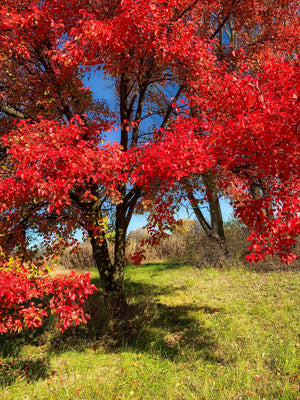
PLANTING
USDA Hardiness Zones: Zones 4–9, depending on cultivar.
Soil: Prefers moist, well-drained, acidic soils. Tolerates clay and occasionally wet soils but dislikes compacted or overly alkaline sites.
Sunlight: Full sun to part shade. Full sun yields the best fall color.
Watering: Water regularly during the first two years. Once established, tupelo is moderately drought tolerant but benefits from consistent moisture.
Spacing: Plant 20 to 30 feet apart for shade or ornamental purposes. Columnar forms like 'Tupelo Tower' can be spaced closer.
Planting Time: Best planted in spring or fall when temperatures are mild.
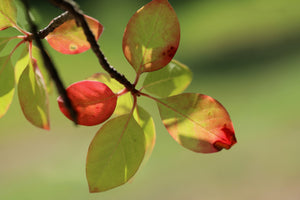
CARE
Watering: Maintain consistent soil moisture during dry spells. Deep watering encourages a robust root system.
Fertilizing: Rarely needed. If soil is poor, apply a balanced fertilizer in early spring.
Pruning: Prune in late winter to remove damaged or crossing branches. Maintain a strong central leader. Minimal shaping is needed due to its natural symmetry.
Pests and Diseases: Largely pest-free and disease-resistant. May occasionally develop leaf spots but these are not typically serious.
Mulching: Mulch annually to retain moisture and suppress weeds. Keep mulch 2–3 inches away from the trunk.
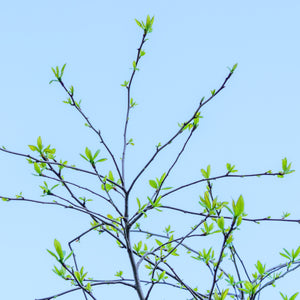
HOW TO USE
Shade and Lawn Tree: Black tupelo’s broad canopy and manageable size make it a beautiful shade tree for lawns, parks, or open spaces.
Fall Focal Point: Use as a specimen tree to showcase its extraordinary fall foliage. Place where it can be backlit by the sun for maximum color impact.
Native and Pollinator Gardens: Its flowers attract bees, and its berries feed birds and other wildlife. Pair with other native species such as oak, serviceberry, and viburnum.
Wet Soil or Low Areas: Naturally tolerant of periodic flooding, tupelo works well along streambanks, retention basins, or rain gardens.
Narrow Spaces: Upright cultivars like 'Tupelo Tower' fit beautifully in tight areas where traditional shade trees may not.
Multi-Season Displays: Combine with ornamental grasses, asters, and coneflowers for a dynamic garden that transitions smoothly from summer to fall.
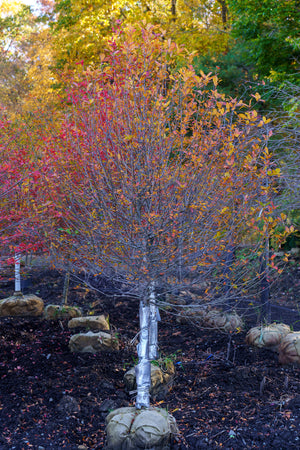
Common Questions
Are tupelo berries edible? The berries are not toxic but are very sour and not typically eaten by people. Birds and wildlife consume them readily.
Are tupelo trees poisonous to dogs or cats? Black tupelo is not listed as toxic to dogs or cats.
Are tupelo trees messy? The berries can drop and create some mess under female trees, but they are small and typically cleaned up by birds. Leaves drop cleanly in fall.
Do tupelo trees need full sun? They grow best in full sun but tolerate light shade. Fall color is more intense with full sun exposure.
How big do tupelo trees get? Most grow 30–50 feet tall with a spread of 20–30 feet. Some can grow taller in ideal conditions.
How long do tupelo trees live? They are long-lived trees, often living 100–200 years or more under good conditions.
Does black tupelo have flowers? Yes, it has small greenish-white flowers in spring. While not showy, they are important for pollinators.
Can I prune a black tupelo? Yes, prune in late winter to remove crossing branches or maintain structure. Avoid heavy pruning.
Conclusion
Black tupelo is a striking native tree that offers unmatched fall color, wildlife benefits, and a refined presence in any landscape. Its adaptability, disease resistance, and structural elegance make it an excellent choice for gardeners seeking a low-maintenance tree with strong seasonal interest. Whether used as a shade tree, a pollinator plant, or a standout autumn focal point, tupelo delivers beauty, durability, and lasting value year after year.
The Tupelo Collection
Sold Out

